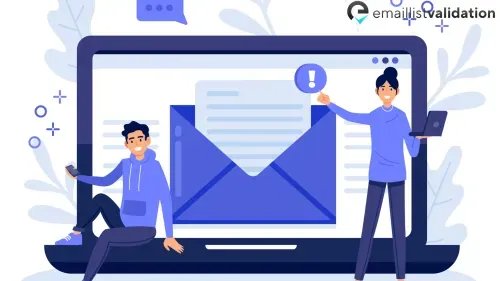In the ever-evolving landscape of digital communication, email remains a cornerstone of our personal and professional interactions. However, the reliability and security of this vital medium depend largely on the accuracy of the data being exchanged. In this comprehensive guide, we'll delve into the intricacies of email validation as of 2019, providing expert insights, best practices, and the latest techniques to ensure your email communications are both precise and secure.
Understanding the Essence of Email Validation
As we entered the year 2019, email validation continued to play a pivotal role in data integrity and security. But why is email validation so crucial?
Data Accuracy: Email validation ensures that the email addresses you use are accurate and free from typos, ensuring your messages reach their intended recipients.
Security: Validating email addresses helps safeguard your communication against potential threats, such as phishing attacks and unauthorized access.
Regulatory Compliance: In an era of stringent data protection regulations (e.g., GDPR), validating email addresses is essential to meet legal requirements and avoid hefty fines.
Enhanced Reputation: Using validated email addresses enhances your organization's credibility and professionalism.
Email Validation Tools and Techniques in 2019
The year 2019 witnessed advancements in email validation tools and techniques. Here's a glimpse of what was on the horizon:
Regular Expressions (RegEx): RegEx patterns became more sophisticated and widely adopted for email validation, allowing for precise checking of email formats.
API-Based Services: Email validation services like ZeroBounce, Hunter, and NeverBounce offered APIs that could be seamlessly integrated into websites and applications, streamlining the validation process.
Real-Time Validation: Many services provided real-time validation, enabling users to check the validity of an email address as it was entered in a form field.
Bulk Email Verification: For organizations dealing with large email lists, bulk email verification tools became indispensable for maintaining data accuracy.
Commonly Used RegEx Patterns for Email Validation
In 2019, RegEx patterns for email validation became more sophisticated. Here are some commonly used RegEx patterns:
Basic Pattern: ^[a-zA-Z0-9._%+-]+@[a-zA-Z0-9.-]+\.[a-zA-Z]{2,}$
- This pattern checks for a basic email format with letters, numbers, and specific characters.
Extended Pattern: ^(?=.{1,256}$)(?=.{1,64}@.{1,255}$)^[a-zA-Z0-9._%+-]+@[a-zA-Z0-9.-]+\.[a-zA-Z]{2,}$
- This extended pattern enforces maximum length limits for the entire email and domain.
Best Practices for Email Validation in 2019
Use Established Tools: Leverage reputable email validation services and libraries to ensure accuracy and security.
Regular Validation: Implement regular validation checks for email addresses stored in your databases to maintain data integrity.
Real-Time Validation: If applicable, provide real-time email validation feedback to users during registration or data entry.
Educate Users: Educate your users on the importance of providing accurate and valid email addresses to receive important communications.
Common Questions About Email Validation in 2019
Is email validation still relevant in 2019?
Absolutely! Email validation is as relevant as ever, especially with the increasing focus on data accuracy and privacy.
Are RegEx patterns the only way to validate emails?
While RegEx patterns are a common method, there are also reliable email validation services and libraries available that simplify the process.
Do I need to validate emails in real-time on my website?
Real-time validation can enhance user experience and data accuracy, but it depends on your specific use case and requirements.
Is email validation required for GDPR compliance?
While not explicitly mandated, email validation is a good practice to ensure that you're processing accurate and valid email addresses as part of GDPR compliance efforts.
In conclusion, as of 2019, email validation continued to be a cornerstone of data accuracy and security in the digital age. The tools and techniques available were more advanced than ever, allowing organizations and individuals to ensure their email communications were both precise and protected. By adhering to best practices and staying updated on the latest validation methods, you could maintain data integrity and keep your email communications secure and reliable.



